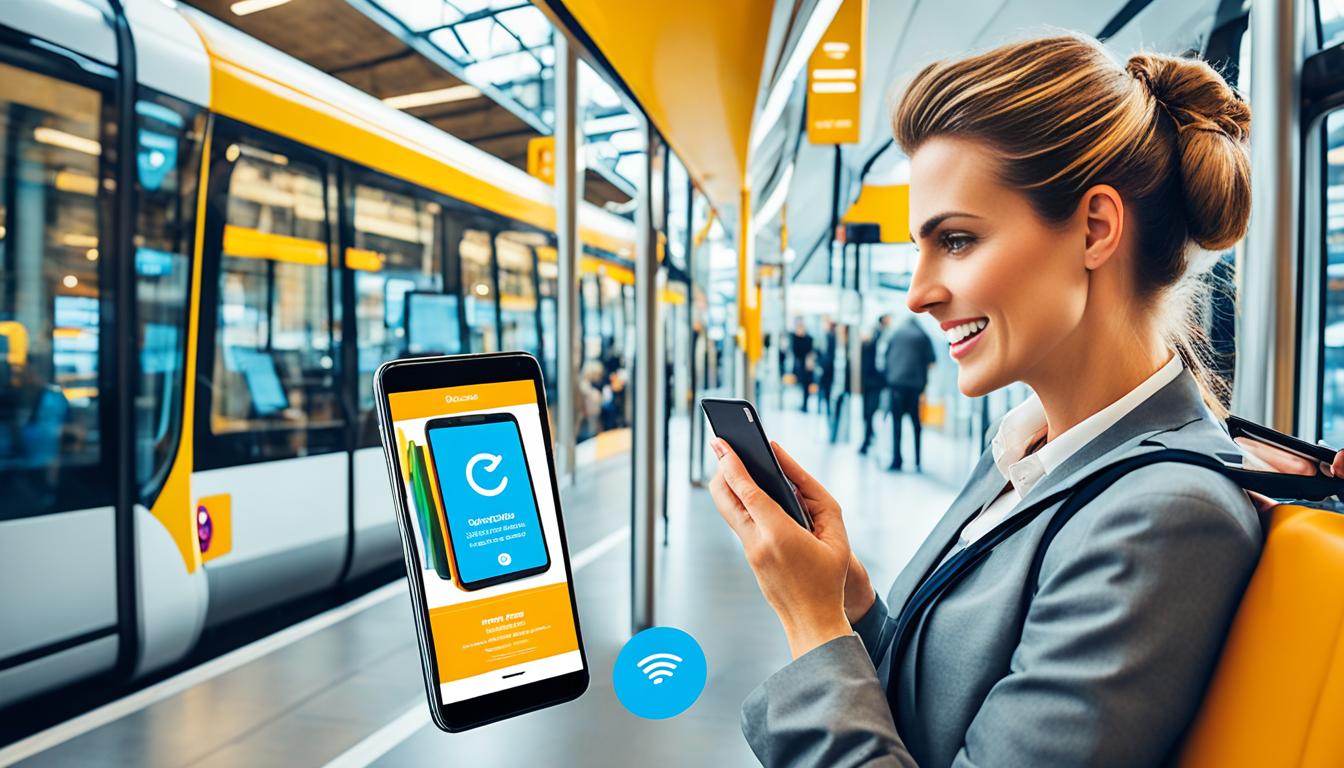
In today’s fast-paced environment, mobile devices have evolved significantly from basic cell phones into multifaceted tools that include smartphones, tablets, and wearables. These portable gadgets are no longer luxuries; they have become essential for navigating the digital landscape, enabling effective communication, and managing everyday tasks. As reported by Statista, more than half of all web traffic worldwide in 2021 came from mobile devices, underscoring their critical role in our daily lives. Additionally, search engines like Google prioritize mobile-friendly websites, reinforcing the necessity of mobile optimization not just for user engagement, but also for business success. This exploration will delve into the evolution of mobile devices and their significance, shaping our connectivity while enhancing productivity and personal interactions.
Key Takeaways
- Mobile devices are essential for digital communication and internet access.
- Smartphones serve as lifelines in vulnerable contexts, aiding safety and coordination.
- Over half of global web traffic comes from mobile devices, highlighting their importance.
- Google’s mobile-first indexing prioritizes mobile-optimized content for better SEO.
- Investing in mobile optimization offers a competitive edge for businesses.
- Mobile apps can significantly enhance user engagement and personalization.
- Mobile devices play a crucial role during crises, providing communication and safety.
The Evolution of Mobile Devices
The journey of mobile devices reflects remarkable technological advancements, transforming connectivity and daily life. Initially, basic cell phones dominated the market, primarily utilized for voice calls and text messages. The rise of smartphones marked a significant milestone, bringing forth features that revolutionized the way users interact with technology.
From Basic Cell Phones to Smartphones
Basic cell phones such as the Nokia 1100 were vital in laying the groundwork for mobile communication, selling over 250 million units globally, particularly in developing countries. The introduction of the smartphone brought a plethora of functionalities, allowing users to access the internet, download applications, and share multimedia effortlessly. As smartphones became widespread, the amount of time individuals spent on their devices soared, with statistics showing an average of almost 800 hours spent annually on smartphones alone.
The Role of Tablets and Wearables in Modern Connectivity
Tablets have emerged as versatile devices, bridging the gap between smartphones and traditional computers. Their larger screens offer enhanced usability for tasks like browsing and media consumption. In parallel, wearables such as smartwatches and fitness trackers have become integral to the mobile ecosystem, providing users with instant access to notifications and health monitoring without needing to reach for their smartphones. The integration of these mobile devices enhances connectivity, showcasing how technology increasingly permeates everyday life.
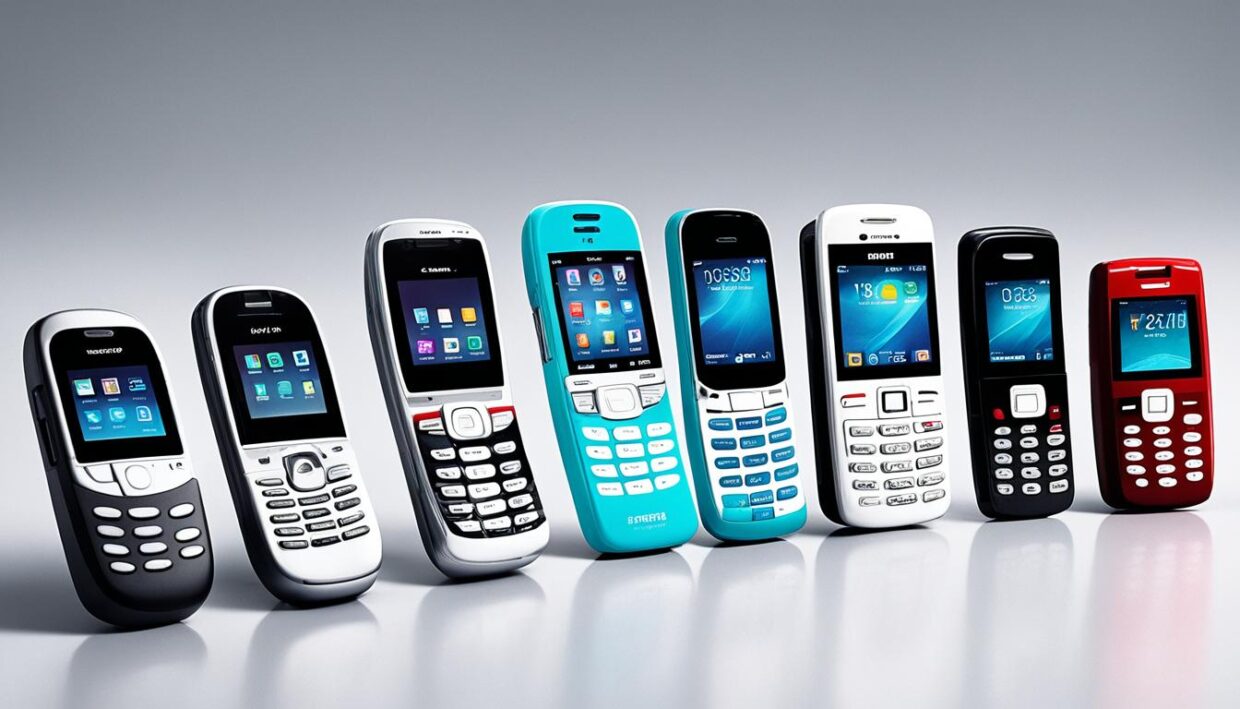
Understanding the Significance of Mobile Devices
Mobile devices play a crucial role as gateways to the digital experience, fundamentally altering how individuals interact with the world around them. More than half of all devices accessed daily are mobile devices, highlighting their impact on everyday activities. They provide users with seamless access to information, enabling instant connectivity and improving communication channels.
The Primary Gateway to the Digital Experience
Smartphones dominate the mobile device landscape due to their versatility and the convenience they offer. Users can browse the internet, access applications, and stay connected through various platforms all from one device. Tablets, while also serving as mobile devices, excel in scenarios requiring larger displays and better battery life, making them ideal for work presentations or gaming experiences. E-readers like the Amazon Kindle and Barnes & Noble Nook are tailored for an optimal reading experience, further showcasing the range of options available in this category.
Enhancing Communication and Connectivity Through Mobile Gadgets
The rise of mobile technology has transformed communication, allowing for instant messaging, video conferencing, and social networking in unprecedented ways. With smartphones enabling access to Wi-Fi, cellular networks, and Bluetooth connectivity, users can participate in diverse interactions with ease. Such advancements foster collaboration in healthcare, education, and business sectors, improving overall quality of life. The dominance of mobile devices also ushers in emerging trends, including a growing emphasis on mobile-first design and the integration of artificial intelligence in applications, signaling a future where connectivity continues to influence daily life profoundly.
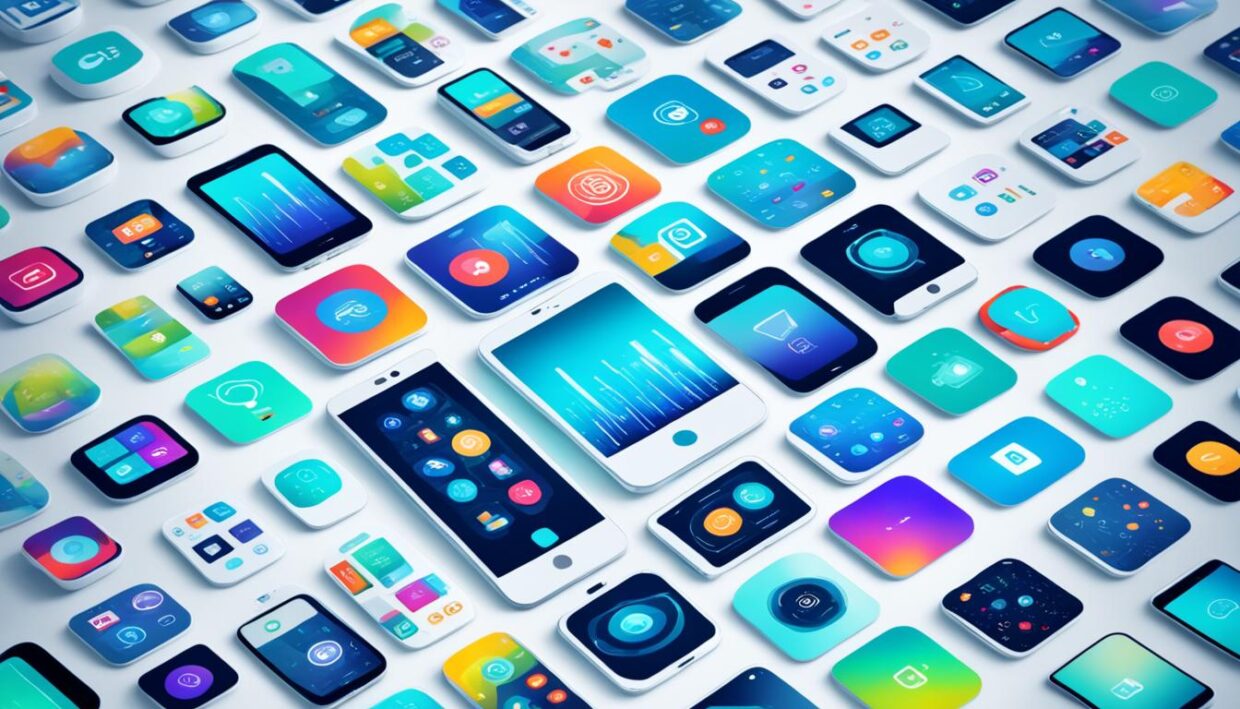
Mobile Computing and Its Impact on Daily Life
Mobile computing has transformed everyday life, providing users with an unparalleled level of flexibility and convenience. The integration of mobile devices into daily routines allows individuals to stay connected, access information, and perform tasks with ease, regardless of their location. As mobile technology continues to evolve, it reshapes communication, enhances productivity, and fundamentally changes how we interact with the world.
Integrating Mobile Devices into Everyday Routines
The rapid adoption of mobile devices can be attributed to their accessibility, ease of use, and the robust connectivity options available. In 2011, a significant percentage of mobile phones shipped to users aged 18-29 were smartphones, indicating a strong inclination towards mobile technology among young people. By April 2012, the number of smartphone users in the United States reached 110 million, reflecting a 44% increase from the previous year. These statistics underscore how mobile computing has become a vital tool in daily life.

- Access to information and services has become immediate and convenient.
- Social media applications foster communication and engagement among users.
- Mobile shopping has revolutionized purchasing behaviors, allowing for seamless transactions.
Changing Work Dynamics: Remote Work and Mobile Technology
The shift towards remote work has been significantly influenced by advances in mobile technology, allowing employees to stay connected with colleagues and access work documents from virtually anywhere. Statistics indicate that mobile device sales have been projected to surpass PC sales as early as 2013, further emphasizing the importance of mobile computing in the workplace. The ability to conduct meetings via smartphones or tablets while on the go highlights how mobile technology facilitates effective communication among team members.
This transition towards flexibility has led to new work models that prioritize productivity without being bound to traditional office settings. As e-commerce flourishes, businesses are leveraging mobile platforms to expand their reach, utilizing mobile applications to create engaging shopping experiences. The ongoing evolution of mobile devices and applications fosters an environment where both employers and employees can thrive in a rapidly changing landscape.
Mobile Devices and the Internet of Things (IoT)
Mobile devices play a pivotal role in the Internet of Things (IoT), serving as the primary means of connectivity for various smart devices. These devices rely on mobile technology to operate effectively within our increasingly connected environment. As smart homes continue to evolve, the integration of mobile devices enables seamless control of appliances, security systems, and other technologies, enhancing comfort and convenience.
How IoT Devices Rely on Mobile Connectivity
IoT devices, ranging from smart thermostats to connected lighting systems, depend on mobile connectivity to function efficiently. With wireless communication, these devices can exchange data with the cloud and offer users real-time updates. This connectivity allows for:
- Remote control and monitoring of devices through mobile applications
- Automated adjustments based on user preferences and environmental conditions
- Enhanced data analytics to optimize energy usage and system performance
The surge in consumer-connected and enterprise IoT devices signifies a growing reliance on mobile technology. These connections provide a bridge between users and their environments, making daily tasks smoother and smarter.
The Future of Smart Homes and Mobile Integration
The future of smart homes looks bright, with advancements in IoT driving deeper integration with mobile devices. Expected developments include:
- Increased interoperability among devices from different manufacturers.
- Enhanced security measures to protect against vulnerabilities.
- Innovative features allowing devices to learn from user behavior and adapt accordingly.
As mobile devices continue to evolve, their capability to manage an array of IoT devices will become more sophisticated. This evolution promises a future where smart homes are not just connected but also intelligent, offering an integrated approach to home management that maximizes efficiency, safety, and user satisfaction.

| Device Type | Examples | Key Benefits |
|---|---|---|
| Consumer IoT Devices | Smart TVs, Smart Speakers | Home entertainment, voice control |
| Enterprise IoT Devices | Smart Thermostats, Smart Lighting | Energy efficiency, automated control |
| Industrial IoT Devices | Smart Locks, Sensors | Monitoring and predictive maintenance |
This table illustrates the diverse range of IoT devices and their significant advantages, reinforcing the importance of mobile devices in this dynamic ecosystem.
Future Innovations in Mobile Technology
The landscape of mobile technology is on the brink of transformation, particularly in the realm of smartwatches and wearables. Advancements are set to enhance user experience significantly. In addition, research initiatives are exploring concepts that push the boundaries of interaction and technology, such as mind-controlled devices and the body internet.
Advancements in Smartwatch and Wearable Technologies
Smartwatches are evolving into sophisticated devices, incorporating health monitoring and connectivity features that surpass basic functionalities. These wearables can track vital signs, detect stress levels, and even facilitate communication without needing a smartphone nearby. Companies like Apple and Samsung lead this innovation, ensuring that smartwatches are accessible for both fitness enthusiasts and everyday users.
Concepts of Mind-Controlled Devices and Body Internets
Researchers at prominent institutions are investigating the practicality of mind-controlled devices. These innovations aim to enable users to interact effortlessly with their technology using thoughts, thereby minimizing the need for physical screens. The body internet concept promotes connectivity between wearables implanted in the body, allowing for continuous health monitoring and data collection. These advanced integrations will not only revolutionize how individuals interact with mobile technology but also enhance remote health services, paving the way for smarter healthcare solutions.
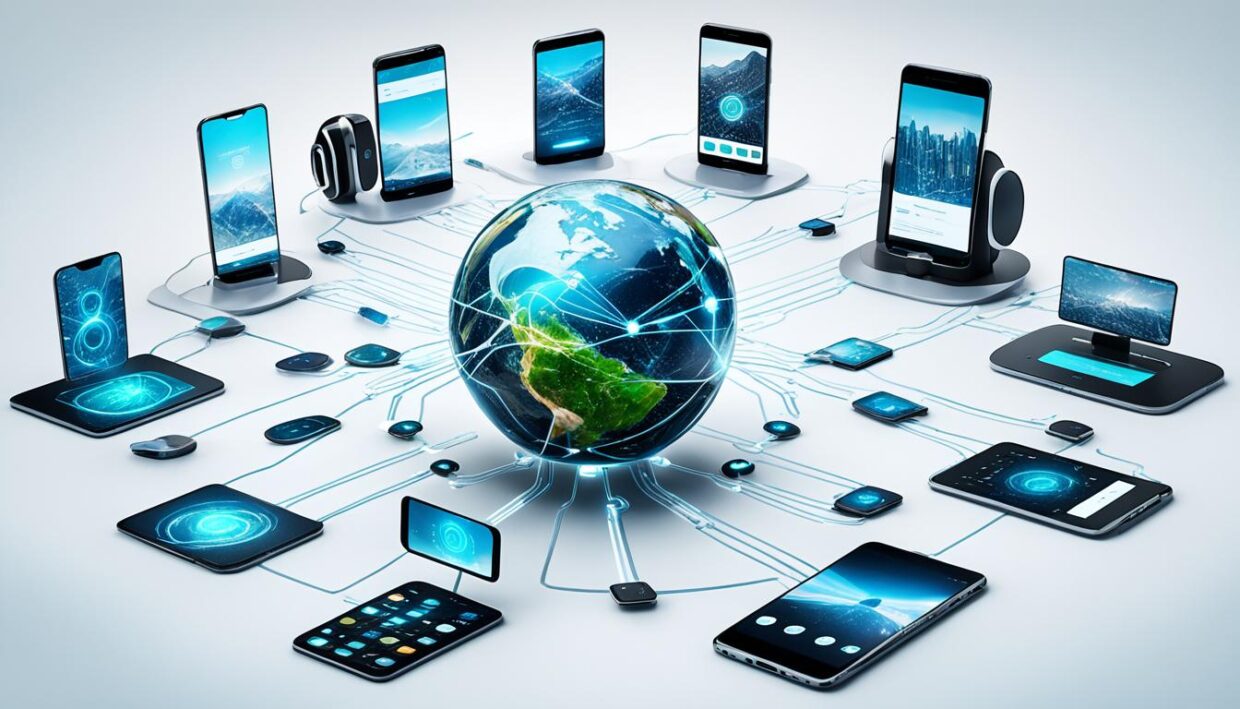
Mobile Devices: A Tool for Bridging the Digital Divide
The advancement of mobile devices plays a pivotal role in addressing the digital divide that affects many low-income communities. Various initiatives focus on the importance of affordability to ensure that everyone has access to essential technology. Tackling barriers such as high device costs can significantly enhance connectivity and engagement for those previously isolated from the digital world.
Affordability Initiatives for Low-Income Populations
Efforts to improve affordability include initiatives led by organizations like the GSMA, which propose solutions such as tax breaks and financing options. These initiatives aim to make mobile devices more accessible, thereby allowing individuals to connect to vital services and opportunities. With the introduction of financing models, customers can make smaller initial payments followed by monthly installments. This flexibility can empower individuals to acquire their first phone, facilitating better access to education, healthcare, and job opportunities.
Empowering Communities with Accessible Technology
Accessible technology can transform communities, especially when aimed at closing the digital divide. Giving a single mobile device to a community leader has shown to enhance access to services, including health monitoring and vaccination tracking. Nonetheless, protecting these devices from theft or resale remains a challenge, leading to strategies such as geo-fencing and network locking. Additionally, the proposal for upgrading older devices is critical, requiring ongoing efforts to ensure affordability and availability of newer technologies. With approximately 2.5 billion people now having access to mobile broadband in emerging economies, further improvements can enable even more individuals to benefit from the features of modern mobile devices.

The Role of Mobile Devices in Education
Mobile devices have transformed educational landscapes in significant ways. They provide students with the ability to access a vast array of digital resources, fostering both engagement and collaboration. Both tablets and smartphones are essential tools for modern learners, enhancing the educational experience beyond traditional classrooms.
Enhancing Learning with Tablets and Smartphones
Evidence indicates that mobile devices can motivate students to engage in learning activities. They facilitate a variety of educational practices, including:
- Active learning through participation in polling and classroom gamification
- Collaborative note-taking and sharing resources among peers
- Listening to recorded lectures for better understanding of course materials
- Conducting research and looking up terminology in real time
- Taking pictures of whiteboard notes or diagrams for later reference
While advantages are evident—such as increased student motivation and access to current information—there are challenges as well. Distractions from notifications may impact attention spans and cognitive abilities. Research suggests that reliance on mobile devices could lead to academic dishonesty, with easier access to information resulting in a decline in handwriting skills.
Statistics reveal a widespread embrace of mobile technology among students. In 2016, over 99% of students at the University of Central Florida owned a smartphone, while around 63% had tablets by 2018. Recently, Apple devices have led the market with over 55% ownership in North America, with smartphones remaining the most popular learning tools.
The following table outlines mobile device ownership trends among students at the University of Central Florida:
| Year | Smartphone Ownership | Tablet Ownership | Wearable Device Ownership |
|---|---|---|---|
| 2016 | 99% | 63% | N/A |
| 2018 | N/A | 50% | N/A |
| 2021 | 99.7% | 45% | 56% |

With mobile devices becoming increasingly intertwined with education, schools and universities must adopt strategies to harness their potential while mitigating distractions. Striking a balance between engagement and focus will pave the way for effective learning outcomes.
Mobile-First Design: Shaping the Future of Apps and Websites
As more users rely on mobile devices for their online activities, the focus on mobile-first design has become essential for enhancing user experience. This approach prioritizes mobile devices throughout the web and app development process. Companies adopting mobile-first strategies have reported improved performance, increased engagement, and overall user satisfaction. Recognizing this shift enables developers to create more responsive design that caters to the needs of their audience.
The Importance of Mobile-First Strategies for User Experience
Mobile-first design emphasizes a user-centric approach, particularly with a growing demographic of mobile users. Google’s implementation of mobile-first indexing has significantly impacted search rankings and the overall performance of websites. Companies like Dropbox have seen benefits from this design philosophy, experiencing heightened mobile engagement and user satisfaction. Enhancements in content management and seamless navigation make mobile-first strategies invaluable for both users and developers.
Responsive Design for Mobile Platforms
Responsive design remains a critical element of mobile-first design. It adapts websites to different screen sizes, ensuring users enjoy a consistent and functional experience. Businesses like Flipkart benefited from this approach, witnessing a surge in mobile transactions. Spotify’s design principles elevate user engagement while Airbnb’s consistent user experience across various devices highlights the necessity of responsive design.
- Improved Load Times: Mobile-first design enhances speed, critical for retaining mobile users.
- Touch-Friendly Interfaces: Interfaces are designed for touch gestures, ensuring usability on mobile devices.
- Testing and Optimization: Real device testing helps identify specific issues, improving overall performance.
The following table illustrates examples of companies successfully implementing mobile-first design:
| Company | Outcome |
|---|---|
| Improved mobile performance with AMP and mobile-first indexing. | |
| Dropbox | Increased mobile engagement and user satisfaction. |
| BBC | Significant boost in mobile traffic and content management. |
| Flipkart | Surge in mobile transactions, with a majority of sales from mobile. |
| Airbnb | Higher user satisfaction and increased mobile bookings. |

Portable Gadgets: Enhancements Beyond Smartphones
Portable gadgets significantly expand the capabilities of mobile devices, providing users with enhanced functionality and convenience. These items, like Bluetooth speakers, portable chargers, and mini projectors, complement existing smartphones and tablets, allowing seamless integration into various daily activities.
For instance, the rise of wearable technologies such as FitBit has made it easier for individuals to track fitness metrics. These devices are available in a wide price range, from economical options starting at $20 to premium variants costing several hundred dollars. Such diversity ensures accessibility for different consumers, empowering them to leverage mobile devices in achieving health goals.
Furthermore, Google Glass introduced a novel way to interact with technology through its heads-up display. Its initial price of $1,500 reflects the innovative approach taken in portable gadgets, emphasizing the quality and advanced technology of the product.
As the concept of the Internet of Things (IoT) evolves, the connection between mobile devices and everyday objects continues to strengthen. Portable gadgets equipped with sensors can contribute to improved traffic management, inventory control, and automation, enhancing overall efficiency in various sectors.

Looking ahead, advancements in flexible and foldable displays may revolutionize how portable gadgets interact with mobile devices. Although still in the early phases, foldable smartphones point towards a future where portability and durability go hand in hand. The increasing integration of AI within smartphones suggests a trend towards smarter interactions, with potential for voice command features and gesture-based control.
In summary, portable gadgets play a vital role in amplifying the functionality of mobile devices. Their versatility not only boosts user experiences but also sets the stage for future innovations in connectivity and usability.
Handheld Electronics in a Connected World
Handheld electronics play a critical role in enhancing connectivity and convenience in today’s digital landscape. These devices range from smartphones and tablets to specialized gadgets such as e-readers and portable gaming consoles. With smartphones leading the charge in term of sales since the late 2000s, they have become the most popular mobile devices worldwide.
The evolution of mobile technology has led to the integration of various sensors, including accelerometers and gyroscopes, allowing users to enjoy more dynamic experiences. Innovations in mobile collaboration systems, introduced around 2009, enable handheld devices to facilitate real-time multi-party conferencing with video, audio, and drawing capabilities seamlessly integrated. This feature has become essential for both personal and professional interactions.
Mobile connectivity has transformed numerous fields, especially in healthcare. Medical professionals increasingly utilize mobile devices to access clinical information, medications, and treatment tools. The gambling industry has similarly capitalized on mobile technology, offering casino games directly on smartphones. This shift raises regulatory concerns due to potential illegal activity.
Military applications of handheld electronics have opened new avenues for training soldiers, allowing them to access educational resources regardless of their location. With smartphone ownership at 92% among American adults as of 2023, the implications for mobile devices are profound. The ability to sync and share data across platforms further enhances connectivity, ensuring users can remain engaged no matter the distance.
The rise of mobile devices continues to shape social interactions as well. Platforms like Meta have seen increased revenue and engagement driven by the ubiquitous nature of smartphones. With nearly five billion people globally owning mobile devices, the influence of handheld electronics on daily life remains undeniable.
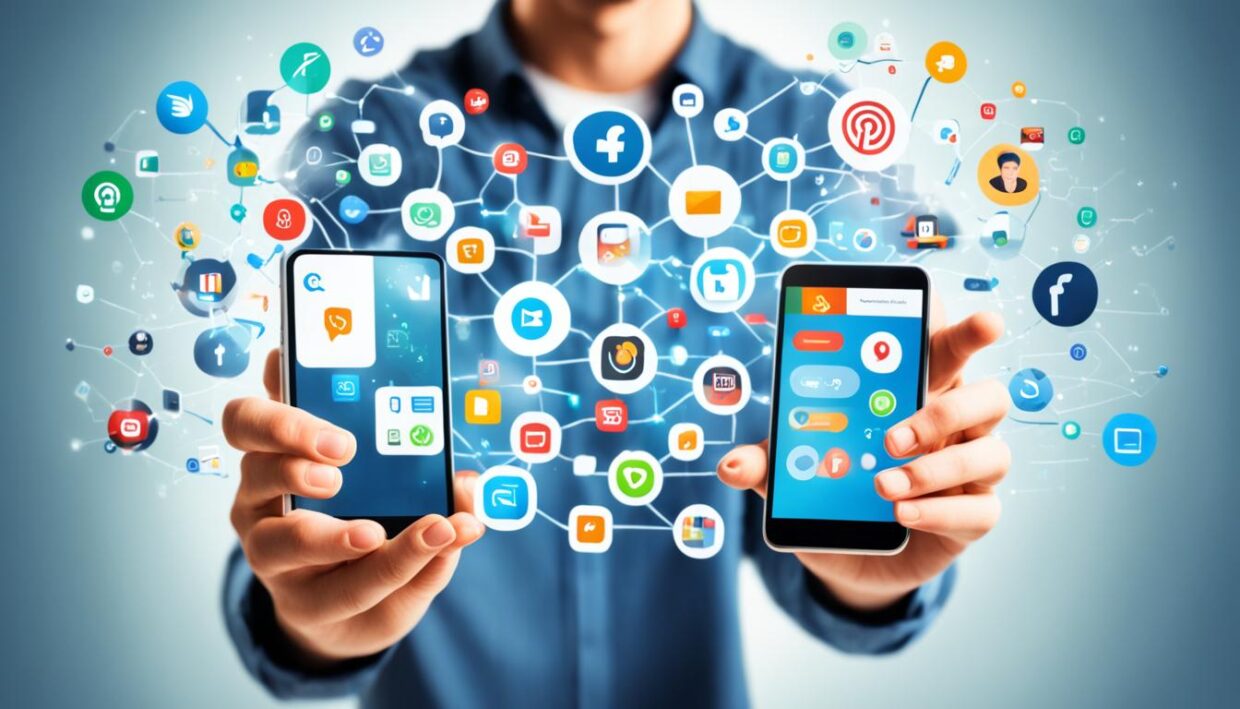
Challenges Faced by Mobile Device Users
Mobile device users encounter distinct challenges that can hinder their daily experience. Two major concerns are the limitations related to battery life and performance issues, alongside heightened privacy and security threats. Navigating these aspects becomes essential for making the most of mobile devices.
Facing Battery Life and Performance Issues
Battery life poses an ongoing challenge for mobile device users, especially as applications demand more resources. When the functionality of devices expands, users commonly face performance issues that can diminish their experience. Factors such as background processes, high-resolution graphics, and constant connectivity might drain battery life more quickly than anticipated. Understanding how to optimize settings and manage applications can significantly improve both performance and battery longevity.
Addressing Privacy and Security Concerns
Privacy and security remain paramount concerns for mobile device users in today’s digital landscape. Different operating systems, such as iOS and Android, present unique vulnerabilities. The trend of Bring Your Own Device (BYOD) has further complicated security measures for organizations, leading to potential risks involving unauthorized access to sensitive corporate data while respecting user privacy. Malicious apps and malware continue to target users, highlighting the necessity for constant vigilance, timely security updates, and user education regarding safe practices like avoiding public Wi-Fi for sensitive transactions. The increasing incidence of data leakage from lost or stolen devices emphasizes the value of encryption and remote wipe capabilities. Without appropriate attention to these factors, mobile device users may unwittingly compromise their personal and sensitive information.

| Challenge | Description | Impact on Users |
|---|---|---|
| Battery Life | Devices struggle to maintain charge due to resource-heavy applications. | Frequent charging leads to inconvenience and potential downtime. |
| Performance Issues | Demanding apps can slow down device responsiveness. | Frustration when multitasking or running essential applications. |
| Privacy | Threats from apps and data leaks jeopardize personal information. | Increased risk of identity theft and unauthorized access. |
| Security | Malware and unsecured networks make devices vulnerable. | Potential loss of sensitive data leading to financial or reputational damage. |
Market Trends in Mobile Devices
The landscape of mobile devices is rapidly evolving, influenced by shifting consumer behaviors and technological innovations. This transformation is evident in the soaring smartphone usage worldwide and the burgeoning market for wearables. Understanding these market trends is essential for businesses looking to align their strategies with consumer expectations.
The Increase in Smartphone Usage Globally
Smartphone usage is experiencing unprecedented growth. By the end of 2021, approximately 580 million users had subscribed to 5G services, with projections estimating a rise to 1 billion subscriptions in 2022. This figure is expected to reach 4.4 billion by 2027, showcasing a significant trend towards faster connectivity. Concurrently, mobile digital ad spending surged, constituting 49.3% of total media ad expenditure in 2023. This statistic highlights consumers’ increasing reliance on smartphones for information and entertainment.
Trends in Wearables and Their Adoption Rates
The wearables market has surpassed 1 billion units by the end of 2022, boasting a market value projected to exceed $54 billion in 2023. This growth is driven by rising health consciousness among consumers and a demand for fitness tracking. The industry is expected to see a 10% increase in 2024, underlining the importance of wearables in everyday life. Notably, the average ownership of wearables for tracking vital signs stands at 3% in developed countries and 7% in developing nations, indicating a growing trend in health-oriented technology.
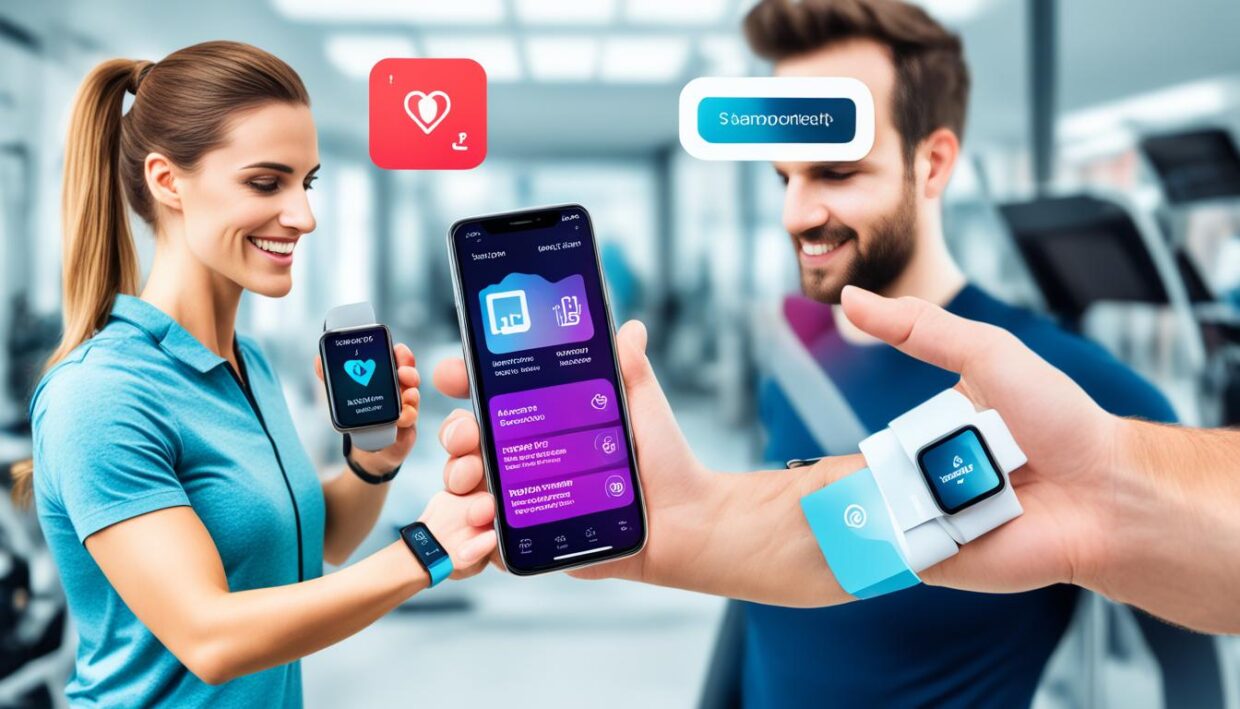
| Year | 5G Subscriptions (Billions) | Wearables Market Value (USD Billions) | Mobile Ad Spend (% of Total) |
|---|---|---|---|
| 2021 | 0.58 | N/A | 49.3 |
| 2022 | 1.00 | 54 | N/A |
| 2024 (Projected) | 1.50 | 59 | 66 (Digital Ad Spend) |
The evolving market trends in smartphone usage and wearables illustrate a dynamic landscape, driven by technological advancement and heightened consumer engagement. These insights equip industry players with the knowledge to adapt and thrive in a competitive environment.
The Future of Mobile Devices and Ubiquitous Computing
The landscape of mobile devices is rapidly evolving, leading us towards a future where ubiquitous computing becomes increasingly prominent. This shift indicates a world where technology seamlessly integrates into our daily lives, encouraging a significant transition away from traditional screens. Embracing this change entails exploring innovative interaction methods, including screenless interaction, which emphasizes intuitive user experiences without the constraints of conventional displays.
Envisioning a World without Screens
The idea of a screenless world is becoming more tangible, driven by advancements in thought interaction technology. Users may soon interact with devices through gestures and voice, allowing for a more natural and immersive experience. The integration of sensors and actuators will play a crucial role in this evolution, enabling devices to collect data and respond to user needs without relying on a visual interface. As a result, daily interactions with mobile devices can transform, fostering greater convenience and accessibility.
Potential Advancements in Touch and Thought Interaction Technology
Research in thought interaction technology, such as brain-computer interfaces, aims to revolutionize how users engage with mobile devices. Institutions like MIT with their Project Oxygen project envision a human-centered computing environment where users can communicate with systems effortlessly. The advancements in ubiquitous computing focus on embedding intelligence in everyday objects, empowering them to learn and act autonomously.
Future developments may include:
- Enhanced connectivity through developments in Wi-Fi and Bluetooth technology, ensuring seamless communication between devices.
- A focus on AI and machine learning, allowing devices to adapt and respond based on user preferences and behaviors.
- Innovative user interfaces, including voice commands and gesture-based controls, making technology more accessible.
As we continue to explore the limitless possibilities of mobile devices and ubiquitous computing, the landscape promises to redefine user experiences and enhance everyday life.
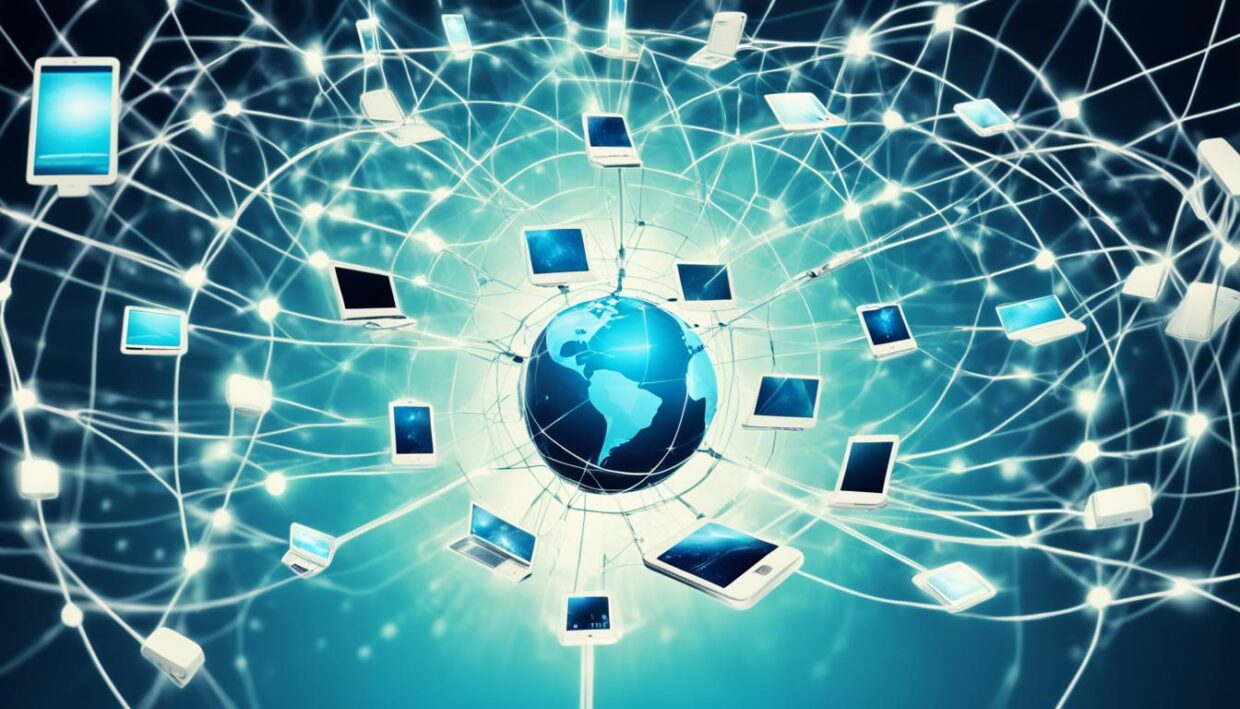
Mobile Device Accessories: Enhancing Functionality
Mobile device accessories significantly enhance functionality, allowing users to customize their devices for various tasks. The range of accessories available today includes protective cases, battery packs, and innovative gadgets designed to maximize the potential of smartphones and tablets. These products play a vital role in ensuring that mobile devices remain relevant and functional in a fast-paced digital landscape.
Protective Cases and Enhanced Portability
Protective cases serve multiple purposes. They not only offer essential protection against drops and scratches but also enhance portability through lightweight designs. Many popular brands, such as Otter Products LLC and Belkin International Inc., provide options that combine style with rugged durability. Users can select designs that complement their lifestyle while ensuring that their devices are shielded from everyday wear and tear.
Innovative Gadgets Designed for Mobile Devices
Innovative gadgets are transforming the way users interact with their mobile devices. From high-quality camera lenses to gaming controllers, these accessories enhance the overall user experience. The growing demand for Bluetooth headphones and cordless chargers illustrates the trend towards wireless technology, allowing for seamless integration with mobile devices. As the global mobile phone accessories market is projected to reach USD 160.6 billion by 2033, it is evident that consumers are willing to invest in innovative solutions that improve functionality.

| Accessory Type | Features | Market Share |
|---|---|---|
| Protective Cases | Durable, lightweight, customizable | 20% |
| Headphones and Earphones | Wireless, noise-canceling, smart integration | 35% |
| Chargers | Fast charging, portable, wireless options | 25% |
| Camera Accessories | Enhanced lenses, tripods | 10% |
| Gaming Controllers | Wireless connectivity, ergonomic design | 10% |
Maximizing Your Mobile Device’s Potential
Maximizing your mobile device’s capabilities can significantly enhance both productivity and entertainment experiences. By utilizing the right applications and optimizing device settings, users can ensure smooth operation and longer battery life. This section explores essential apps and offers techniques to improve device performance effectively.
Essential Apps for Productivity and Entertainment
Choosing the right applications is pivotal for boosting productivity and enjoyment on your mobile device. Here is a selection of key applications that cater to various needs:
- Trello – Organize tasks and collaborate with teams effortlessly.
- Evernote – A powerful note-taking tool for organizing ideas.
- Slack – Streamline communication among team members.
- Spotify – Access a vast library of music and podcasts for entertainment.
- Netflix – Stream your favorite shows and movies anywhere.
Optimizing Your Device for Better Performance
To enhance device performance, several practical strategies can be applied. Regularly maintaining your smartphone can lead to significant improvements:
- Update your Android phone to the latest version to improve performance and extend battery life.
- Free up storage space by uninstalling unnecessary apps to enhance performance.
- Disable unused apps to free up system resources.
- Restart your phone regularly to clear temporary files, improving speed.
- Adjust the system animation speed in developer options for a smoother experience.
- Use lite versions of apps that consume fewer system resources.
- Manage background processes to prevent unnecessary tasks from running.
- Disable battery-draining features, such as location services, for better mobile gaming performance.
- Optimize performance settings for games by adjusting display refresh rates.

Conclusion
Mobile devices have undeniably become integral to the fabric of modern life, acting as essential conduits to the digital world. Over the past decade, there has been a remarkable surge in cell phone ownership, with the vast majority of the population now depending on these devices for communication, information access, and multitasking in daily tasks. This significant evolution in mobile technology not only enhances individual productivity and connectivity but also transforms the societal landscape, driving a tech-savvy culture.
The impact of mobile devices reaches diverse groups, highlighting their potential to change lives profoundly. For instance, a homeless individual utilizing a prepaid phone to seek job opportunities exemplifies how mobile technology can empower even the most marginalized. As innovations continue, including advancements like mobile banking and potential future features such as built-in projectors, the mobile experience will further enrich everyday life. The statistical trends indicate that mobile payments and banking are becoming increasingly popular, showcasing the growing reliance on mobile devices in our financial transactions.
In conclusion, as mobile devices further deepen their integration into everyday routines, they stand to redefine how we interact with the world. Their role in facilitating communication, learning, and productivity is vital, indicating that mobile devices will indeed shape the future of our interconnected society, ushering in new possibilities for innovation and engagement in the digital world.




















Be the first to leave a comment